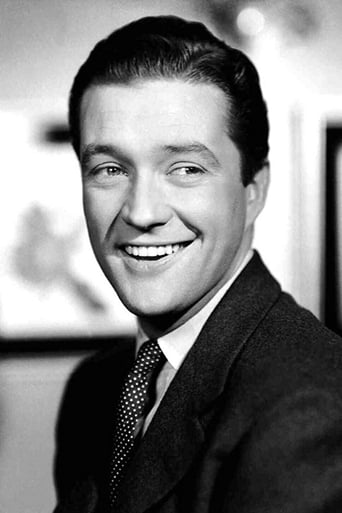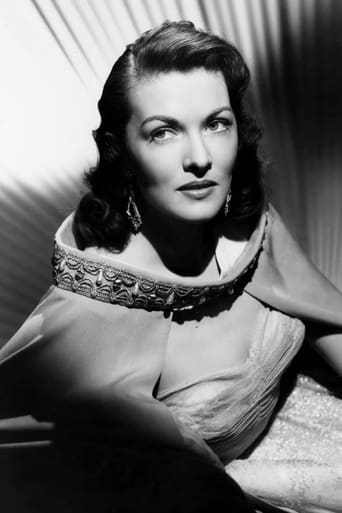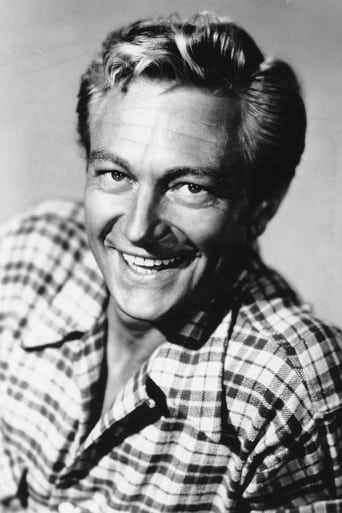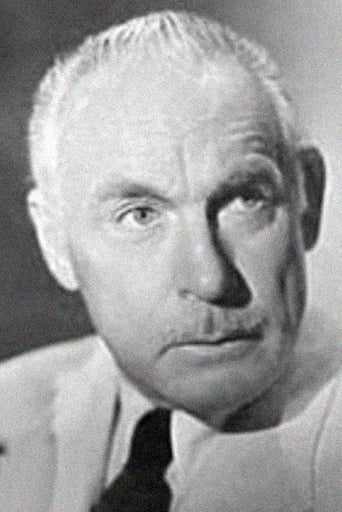bsmith5552
"The Gun that Won the West", the Springfield Rifle, was an advanced breech loading single shot gun that was introduced in order to help the U.S. Army have the upper hand in battles with the Indians. It was yet another Sam Katzman/ William Castle production using an historic figure, in this case Jim Bridger (Dennis Morgan).Jack Gaines (Richard Denning) is running a Wild West Show but has been drinking heavily. His wife Maxine (Max) Gaines (Paula Raymond) pleads with him to stop. His friend Jim Bridger is equally concerned. At one performance, General Carreth (Howard Negley) and Colonel Still (Kenneth MacDonald) recruit Bridger and Haines to lead an expedition to build forts along the rivers of Wyoming. The Wild West show is sold by Max without Gaines' consent.Bridger believes a peace treaty with Sioux Chief Red Cloud (Robert Bice) is possible. However, Red Cloud is against the Whit man building forts on his lands. At a peace conference, in a drunken stupor, Gaines discloses the coming of a new advanced rifle that will out perform any thing to date. Max finally fed up, leaves Gaines and joins Genersl Carrington's (Roy Gordon) expedition to search for fort locations.Red Cloud realizes that his tribe cannot out battle the army with the new Springfield Rifles and decides to attack Carrington's group before they can be re-armed with the new rifle. Gaines meanwhile has come to his senses and takes one of the new guns to Red Cloud to demonstrate its power. When Red Cloud leaves to attack Carrington, Gaines is wounded.General Pope's troops carrying the new weapons decides that they can "head Red Cloud off at the pass" and attack them before they can reach Carrington's group and......................................................It is odd that Pope's troops do not use the new rifles in the film's climatic attack. They use sabers and hand to hand combat instead. The film uses a multitude of stock shots from other productions, particularly the large attack scenes. And oh yes, the Buffalo Hunt.The best performance is turned in by Denning as the drunken Gaines. Morgan doesn't make a very creditable Jim Bridger, the legendary trapper. He had been a popular musical comedy star in the 1940s.The stock footage provides the best of the action scenes.
weezeralfalfa
1955 was a bang up year for Hollywood films featuring conflicts between European settlers or the US army and Native Americans led by Sioux Red Cloud in the Powder River region of Wyoming. Besides this film, "The Last Frontier" also dramatizes the conflict between this 'Indian' confederation and the US army, which built a series of forts along the Bozeman Trail through this region."The Tall Men", starring Clark Gable, dramatizes the first large cattle drive from Texas to Montana, passing through this region. All of these films include some historically-relevant aspects, along with major fabrications and/or anachronisms. In this era, 'Indians' were still nearly always scripted as the enemy: inconvenient obstacles to technological progress and the fulfillment of Manifest Destiny. Thus, none of these 3 films mentions the fact that Red Cloud's confederacy ultimately won a peace treaty in 1868 that stipulated that the US army would abandon its newly built forts along the Bozeman Trail and that this trail would be closed to European settler traffic. This treaty effectively lasted until 1876, when the discovery of gold in the Black Hills again brought European settlers in conflict with the Sioux and related tribes. The previous film "Tomahawk" provides a much more accurate account of this war.This story begins with alcoholic ex-frontiersman Jack Gaines(Richard Denning) and his beautiful wife(Paula Raymond) running a traveling wild west show through the eastern US. Storied mountain man and scout Jim Bridger is part of their show. Comes an army request that Bridger return to the West as a scout for Colonel Carrington and an influence with chief Red Cloud, in an endeavor to build a series of forts along the Bozeman Trail to protect workers building a railroad through this prime hunting grounds for the north plains 'Indians'. Bridger accepts, and Mrs. Gains convinces a reluctant Jack to accompany Bridger. To help accomplish this task, the army has commissioned the manufacture of a superior Springfield rifle. Unlike previous models, this one has a rapid breech-loading mechanism, and is accurate at long distances, thus making it a much more effective weapon against the 'Indians' than previous models.Once at Fort Laramie, Carrington's headquarters, Gains suggests they threaten Red Cloud with news of the new rifle. But Red Cloud says he will exterminate them before this rifle arrives. Later, Gains appeals to General Pope, who has replaced Carrington as commander at Ft. Laramie, after Carrington left for the Powder River region. Gains demonstrates the rifle to Red Cloud, who is impressed, but again says he will exterminate Carrington's forces before more of these rifles arrive. Wounded Gains rides to tell Carrington, and Bridger rides to tell Pope to direct his forces, with the new rifle, to attack Red Cloud before he attacks Carrington. A big battle ensues, the new rifle takes its toll, and the 'Indians' retreat. A now sober Gains is reunited with his estranged wife, and they talk about starting a ranch in this region.To me, the film appears to have been largely shot in the spectacular-looking Badlands region of SD, which includes the bison chases and kills. Apparently, some stock footage from "Buffalo Bill" was used for the Wild West show scenes. The real Jim Bridger would have laughed himself silly at Dennis Morgan as his stand in. The real Bridger was in his 60s during the Red Cloud War, and usually with long hair and bearded, not the '50s-looking, young, clean-shaven and shorn, bland,Morgan.Denning was OK as the fictional Jack Gaines. But, Wild West shows didn't begin until the '80s, whereas the rest of this story takes place 15-20 years earlier. Thus, this unnecessary aspect of the film should have been deleted. Roy Gordon was OK as the historically-correct Colonel Carrington, and Howard Wright was OK as ex-Civil War General Pope. The real Pope did spend some years involved in western 'Indian' wars, but apparently was not involved in this way. Paula Raymond made a beautiful and forceful Mrs. Gaines, but Robert Rice hardly makes a credible-looking Red Cloud. Young Man Afraid Of His Horses(probably a mistranslation) was a real lieutenant under Red Cloud during the Powder River War. However, Red Fox, later to gain fame in Buffalo Bill's traveling show, wasn't even born yet, and lived to see Nixon resign as President! Overall, the acting and dialogue is a bit wooden, and no major stars are included. This was the first year for Clover Productions, which mostly produced low budget fantasy films at this time, marketed by Columbia.The real Powder River War had nothing to do with railroad building, and everything to do with protecting settlers who were mostly heading for the recently discovered gold fields around Virginia City, MT. The 1866 model breech-loading Springfield was rushed to Carrington's forces, and did greatly improve the effectiveness of the army against the 'Indians', over the previous muzzle-loading version: the standard issue in the Civil War. However, ultimately the army brass decided to pull out of this area and concentrate its resources on protecting the transcontinental railroad, being built across southern Wyoming at this time. Incidentally, 'The Gun that Won the West' is usually considered to be the Winchester repeating rifles, also introduced in 1866, and the Colt revolvers, not this single shot army rifle.
George Gauthier
Despite the summary above, this events that this movie depicts happened during Red Cloud's War happened in 1866- 1868 not the late 1880s. Also, the Secretary of War depicted in the movie, Edwin Stanton left office in 1868. The introduction of the Springfield rifle helped the Army win some battles. Peace came after a change of policy that lead to the Army's abandonment of the Powder River Country and its forts along the Bozemann trail. Settlers were channeled to the Transcontinental Railroad then nearing completion. It's route ran farther south.Red Cloud was the only major Indian leader who really won a war against the US Army. The peace treaty did not last long thanks to white treachery, greed for gold, Custer's thirst for glory, etc.




